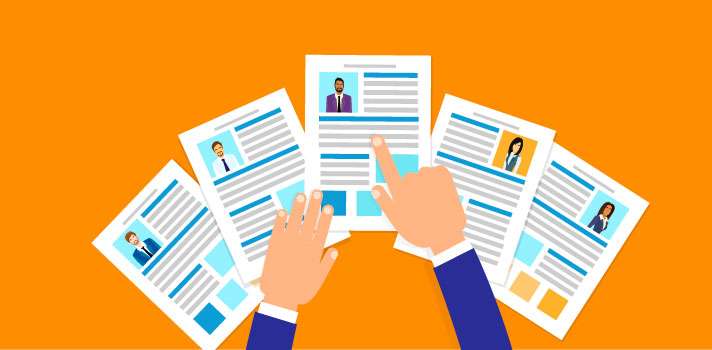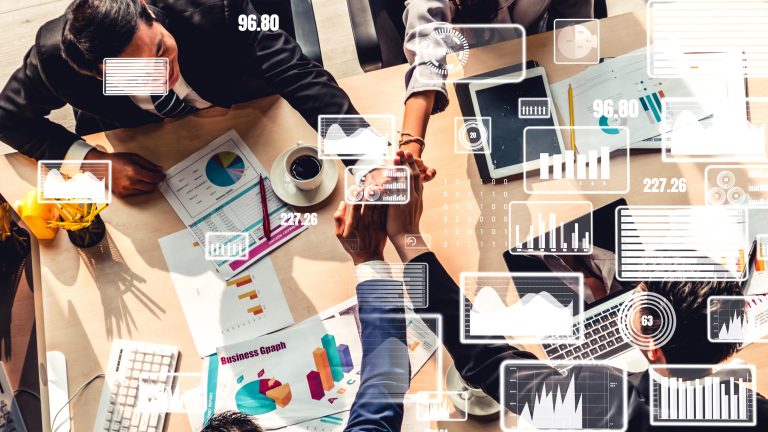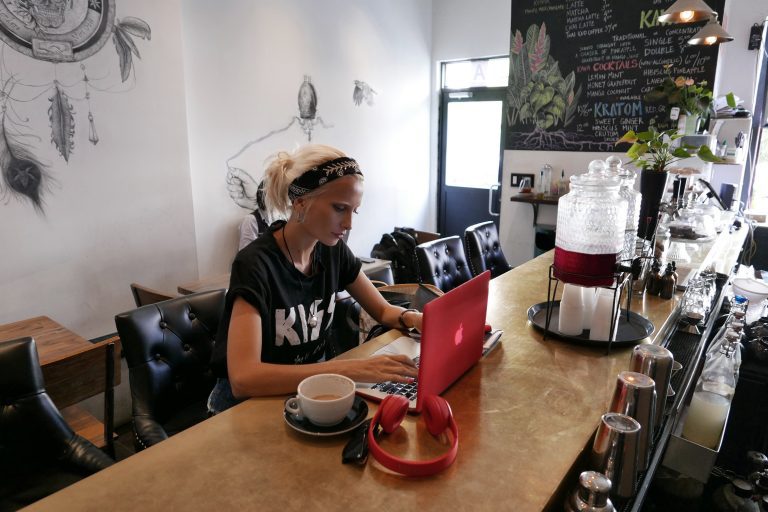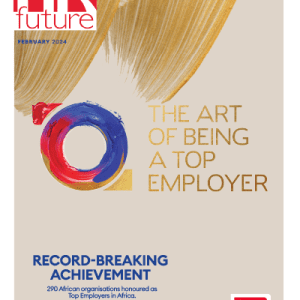The modern challenges of the space of human resources warrant modern solutions. With remote work and her different workforce becoming more common, HR professionals will need to adapt fast. New tools for managing these changes are, at least in part, provided by technology, particularly artificial intelligence (AI).
Recruitment Optimization by AI
However, the first step of the recruitment process is simplified by deploying AI that automates resume screening and applications. The technology quickly weeds through massive piles of applications to sift out the best candidates up to predefined criteria, reducing man hours spent reviewing applications by HR staff. By automating this recruitment process, the time taken for the whole process is reduced, and HR teams don’t have to spend all their time trying to engage potential hires, leaving them with time on their hands to do just that.
Enhancing Candidate Experience with AI
Also, AI has a big role in improving the overall candidate experience. AI automates the process in a way that keeps candidates interested and up to date by sending messages and new updates at appropriate times to show them you value them. The part that matters most is in a competitive job market where the quality of the recruitment experience can make a lot of difference in a candidate’s decision to accept a job offer.
AI-driven Analytics for Recruitment Success
Leveraging advanced AI tools like Bluedot’s AI note taker revolutionizes recruitment and gives us deeper insights into candidate data. Much of this information is analyzed by these tools — from resumes to interview notes — to identify patterns and predictors of job success that people might miss as human recruiters. With these analytics, HR teams can use HR analytics to make data-driven decisions aligned with their own strategic goal, which, in fact, results in better hiring outcomes.
Improving Employee Onboarding with AI
AI values the administrative aspects of onboarding. AI tools automate everything from sorting paperwork to the planning and scheduling of training sessions, making them all faster and error-free. This frees up HR professionals to concentrate on the people side of onboarding: making new hires feel welcome and an important part of the organization from the start.
Personalizing the Onboarding Experience
AI highly personalizes onboarding. AI can customize the training and integration programs from new hire data on roles, backgrounds, learning preferences, etc. This makes the onboarding process more enjoyable for new employees but also makes it so that these new employees will be productive team members faster.
- Training modules based on skill assessment
- Schedules personalized to how someone learns at their own pace
- Content delivery is based on different learning styles
Monitoring and Improving Onboarding with AI Feedback
As you onboard new employees, AI tools continuously collect and analyze feedback. With this information, HR teams can regularly gauge onboarding progress at lightning speed, identifying what’s working well, as well as what isn’t, and quickly adjust onboarding strategies accordingly. Active response to new hire feedback by a company helps them improve employee satisfaction and retention in the onboarding process, making it dynamic and responsive.
Leveraging AI for Talent Management
HR managers can get a very close picture of their workforce’s skills through real-time AI-driven tools. These tools sift through various data points of performance reviews to daily work patterns and pinpoint areas where skills are lacking and need improvement. Targeted training interventions are possible because they can be targeted to individuals and teams that need that training, and this allows all employees an opportunity to grow and thrive within the scope of their employment.
Predictive Analytics in Employee Development
AI-driven predictive analytics are revamping the way companies develop their employees. These tools use data to forecast future skills deficits and future career progression paths so HR professionals can proactively plan development programs that fill not only current skill gaps but also future challenges. Companies can rest assured they are staying ahead of industry trends and their workforce is always evolving.
Integrating AI into Succession Planning
For the long-term stability and growth of any organization, succession planning is critical. It makes this process work with the help of AI, which helps in insight to identify likely leaders and ensures a smooth transition in the key positions. AI can identify who is going to be future leaders based on both historical data and current performance metrics.
- The ability to predict leadership potential from performance trends
- Assess the impacts of alternative successor plans based on potential situational outcomes.
- The automation of tracking the development progress of prescribed successors.
AI in Leadership Development
Once rich with employee data, the perfect AI tool will be able to sift through and fill out those employees with the talent to become leaders. These tools try to spot successful leadership qualities’ behavior, achievement, and feedback patterns. It allows organizations to concentrate this leadership development spending on the best people, producing a cohort of new business leaders who will be equipped to cut through the very real challenges of today’s business world.
Tailoring Training Programs with AI Insights
Compared to leadership training, AI ensures that leadership training is highly customized based on each potential leader’s needs. AI programs try learning styles, leadership gaps, and career trajectories to build processes put together and personalized training programs. That’s because this customized approach means that we can tailor your leadership training investment for every leader, so it specifically provides the support and development they need to be successful.
Measuring the Impact of Leadership Training
Thirdly, AI must also evaluate leadership training programs. AI tools allow one to track key performance indicators before and after training to get very visible concrete data on how training affected individual and organizational performance. We use this to refine the training programs and justify the investment in leadership development because we can see leadership quality and business outcomes improve.
Utilizing AI for HR Strategies
AI makes strategic HR planning actionable, from giving HR the knowledge to strategically assess an industry to creating leadership strategies by visualizing how much talent any company has. AI aggregates data from different sources – employee surveys, performance metrics, and market trends; this data is aggregated and analyzed to offer a picture of the workforce and give insights into future work needs. HR professionals have access to view and explore the data so they can opt to alter resource allocation, edit policy, and decide on strategic initiatives that will be beneficial to their organization. As with AI, HR strategies are now proactive instead of reactive and have become as strong as the working landscape itself.
AI for Enhancing Employee Engagement
Retention and productivity are key elements for employee engagement, and from that perspective, AI offers an opportunity for increased engagement across the whole organization. Today’s enterprise includes employees across multiple time zones, which necessitates a web and mobile platform that can analyze employee feedback in real time and identify engagement drivers and actions to increase overall satisfaction. The systems can also make employee interactions feel more personal and valued. They can personalize employee experiences and interactions with the company. AI works through continuous learning and adapting to improve the workplace and increase engagement.
Predictive Turnover Analytics
AI predictive analytics in HR helps teams to proactively tackle turnover. AI tools can help managers spot patterns and predictors of employee turnover by alerting managers before resignations. They help ensure timely interventions when it comes to workplace conflicts or bringing more support and development opportunities to at-risk employees. Not only does this save on recruitment costs, but it also keeps organizational knowledge and builds morale.
Optimizing Team Collaboration with AI
AI tools increase team communication by reducing routine information exchange and making meetings more productive. With chatbots and virtual assistants driven by AI, we gain quick answers to common questions, schedule meetings, and even create summaries of conversations so everyone is on the same page. With these tools, the possibility of misunderstandings is reduced, and communication is made to run smoothly so the team stays cohesive and taps momentum.
AI and Team Dynamics Analysis
To do effective collaboration, we need to understand and optimize team dynamics. With AI tools, analyzing work styles, team sentiment, and communication patterns, AI tools are critical to this process. This analysis is used to determine how to improve team interactions, teamwork, and productivity.
- Additionally, it monitors real-time sentiment and stress levels to avoid burnout.
- Identifying communication gaps and how to reduce information flow
- Team building activity recommendations based on shared interests and even personality types
AI Solutions for Remote Work Challenges
However, the challenges that remote work presents are specific types of problems that, especially in the case of AI, can actually be very helpful in solving them. AI tools improve the work of remote teams, from easing the process of building approximated schedules across time zones to making it easier to operate under technology’s burden via virtual collaboration. This allows them to predict the best times for meetings, advise on breaks so they don’t phone screen to death, and give each team member on their team tips for the perfect work-life balance. That is how AI works with remote workers: making solutions fit their specific needs and making distance irrelevant for efficient collaboration.
Call to Action: Embracing AI in HR Management
It’s not just about getting on board with AI in the HR management sphere; it’s embracing it for the benefit of the workplace itself. For the most part, HR with AI brings with it the tools and insights that allow you to improve processes and make them more responsive and efficient, helping the modern workforce find what they want. Now, as we look forward to the future, we see that the role of AI in human resources will definitely continue to permeate successional strategies. Companies that invest in AI-based HR solutions today will be more able to attract, develop, and retain the best, thereby building a dynamic, inclusive workplace. The integration of AI into your HR practices not only provides better efficiency but also positions your organization better for long-term success.
Guest writer.

























